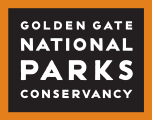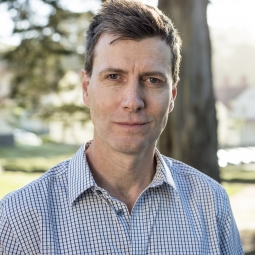Game Changer - How the Institute is Transforming Policy and Practice
Publication Date
Story/Content
The Institute's starting point is our belief that parks and public lands can play a critical role in tackling many of society’s biggest social and environmental challenges. Working closely with partner organizations, we identify unique opportunities to bring about change locally, regionally, and nationally.
From Local to National
Since the Institute was established in 2008, we have developed a model for changing systems locally, regionally, and nationally. Our starting point is usually a specific success or approach we feel could be replicated elsewhere and taken to scale. For instance, in the realm of food policy, we were inspired by local examples in the Golden Gate National Recreation Area of cafés serving healthy, delicious, and sustainably-grown food in parks. A few years ago, examples like Muir Woods Cafe were rare in national parks, which often had a reputation for serving food that failed to match the awe-inspiring vistas and other sensory pleasures visitors come to parks to experience. The idea that the mission and values of parks could be embodied in all aspects of the visitor experience—including food service—resonated with us.
Inspired by local efforts to innovate for a better food experience, the Institute researched and published two reports examining how all parks could start to serve food that stands up to a spectacular park experience while also supporting a conservation mission. With the Institute’s support, the U.S. National Park Service adopted standards and guidelines that will affect the nutrition as well as the sustainability of tens of millions of meals served across all of America’s national parks. With these standards in place, NPS now leads the way for other large food service operators in other sectors such as museums, hospitals, schools, and stadiums, and is sharing its expertise across the country.
Partnerships and Pilot Testing
The Institute is fortunate to work with some remarkable collaborators in California, nationally, and internationally. In San Francisco, we draw on the expertise and connections of our parent organization, the Golden Gate National Parks Conservancy, and our partner, the National Park Service. In fact, partnerships are at the heart of everything we do. We believe that collaboration is the key to scaling up good policy and practice.
While we have the support of innovative partners in the Bay Area and are often inspired by their ideas and leadership, we actively seek out innovation wherever it can be found. For instance, one of the most original park responses to a larger societal problem first appeared in Australia. Several years ago, Parks Victoria developed a new concept called Healthy Parks, Healthy People. The idea was to make parks and outdoor spaces an active part of the movement towards preventive health care. The Institute at the Golden Gate and other allies in regional and national parks helped bring the idea back to the U.S.
The next stage was to test the Healthy Parks, Healthy People concept to prove that it could work in practice. Locally, the Institute has been working extensively with land management and health agencies in the Bay Area to test the concept rigorously. In San Francisco, we have worked with our city parks and health officials to pilot the idea that doctors should be prescribing nature and outdoor activities to patients. Across the wider Bay Area region, we are working with 30 organizations to help roll out Healthy Parks, Healthy People programs across nine counties. We are also working with experts nationally and internationally to help identify best practice and how we might bring it to scale.
A Model for Change
While every challenge requires a different solution, the Institute's approach often involves several tried-and-tested steps. These include painstaking research, publishing case studies and roadmaps, convening key stakeholders, testing ideas on the ground, and finally, influencing decision makers.
One example of this approach is our work on climate change education. In 2012, the Institute identified another area where our distinctive approach and networks could allow us to have an outsize impact: climate change. Parks are often on the frontline of climate change impacts. The National Park Service and many other park agencies both in the U.S. and internationally are taking climate change seriously, planning adaptation strategies and responses. Some park superintendents are also using this as an opportunity to engage the public on this critical issue. However, such examples are far from universal. Hundreds of millions of people visit parks and protected areas around the globe. Many are not educated or informed about climate change by their visit to the park.
The Institute views this as a huge missed opportunity to communicate effectively with a massive audience about the impacts of climate change. There is a clear gap in existing climate communications and obvious benefits if this gap could be filled.
Following the approach taken successfully in our food and health programs, our work on climate education focused in its first stage on taking stock of current activities: Who is currently educating the public about climate change in a park context? How are they educating them and with what success? The results of this research were published in May 2013 (see our climate page for more).
The next stage will be to start a dialogue among key stakeholders to identify best practices from among the many different methods currently employed and identify opportunities to spread good practice. We will hold a major conference in the Bay Area in November 2013: a high-level, cross-sector event to identify new models and methods for using parks as an important educational tool. Finally, the Institute will take these lessons to decision makers regionally, nationally, and internationally with a view to moving policy forward.
In order to truly effect change, we believe every good policy must become a widely-adopted, common practice. To ensure that the best ideas across our programs stand the test of time, our work is complemented, as needed, by local pilot testing of identified “best practice” to prove beyond all doubt that the policies are effective, replicable and scalable. As our climate program matures, you can expect to see local pilots, communities of practice, and regional collaborations emerge to stand alongside our existing food and health demonstration projects.


